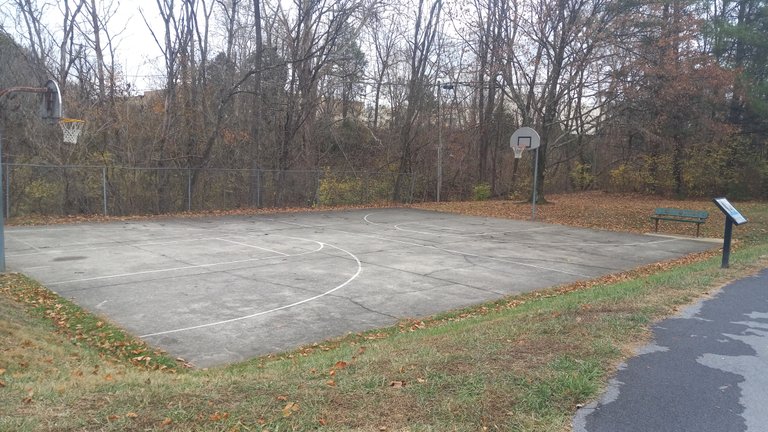I had to spend a couple of days at the beginning of the week taking my wife to a city about an hour away for training for a new job. I found a nearby neighborhood park, and passed the time practicing Tai Chi. The park had a basketball court which made for a perfect training space.

As I was practicing it dawned on me that it has been well over a year since I’ve practiced on such a level, flat surface. This awareness got me to thinking about all of the benefits of training in different spaces.
Whether you’ve just started practicing Tai Chi or you’ve been practicing for a while, you’ll likely benefit from a change up to your typical practice space. Here are some of the benefits you can expect.
The most obvious thing you may notice when changing your training environment is that you can’t remember your form. This is particularly true if you do most of your training indoors. It’s common to adopt visual cues from your training space as hints for what movement comes next. After a while, your brain gets dependent on those cues.
To avoid this dependency, it’s important to frequently face different directions when practicing and to practice in different places. If you find you forget the sequence of your form when you train in a different place or you face a different direction, that’s a sign that you still have much practice to do to internalize that form.
If you’ve gotten your form memorized well and you haven’t trained on uneven surfaces much, then there’s a whole world of exploration waiting for you there. When I started vanlife I was constantly practicing in different places.
From beaches to rutty fields, from campgrounds to back lots, each place offered a different challenge to my balance and root. Your relationship to your form changes when you’re practicing in work boots one day, and crocs the next. It changes when you’re on uneven ground or when you have tons of walnuts on the ground threatening to roll an ankle. In all of these scenarios, maintaining alignment and a solid root is important, but feels a little different.
Generally speaking, training on uneven or treacherous surfaces will encourage you to keep your energy lower, and your stance a bit more active. This is a good thing. You’ll learn that if the ground is sloping forward, it’s easy to over-commit yourself. You’ll shorten your steps accordingly. Your form will change shape ever so slightly as your stance changes in response to your environment.
If you’re practicing Tai Chi for health and wellness, your legs will get stronger from the sinking of your energy. This is a positive outcome. If you are practicing for self defense, you’ll develop the ability to adapt to your surroundings much better. With any martial art, you should spend time training in shoes you wear often, in environments where you might have to face a threat. If all you’ve ever trained is bare feet or light shoes on a padded floor, you’ll be at a disadvantage.
And if you find yourself in the position I’ve been in, with all of your training time being on uneven ground, then a flat surface offers a welcome opportunity to work on other things. I’ve been so focused on stancing for so long, that I was able to shift my attention to some subtle improvements in hand and arm position that I hadn’t even realized I needed until that attention was freed up.
All of this just goes to remind me that Tai Chi can and should be practiced anywhere and everywhere. And it’s a reminder that there’s always something to improve upon.
Congratulations @starbork! You have completed the following achievement on the Hive blockchain And have been rewarded with New badge(s)
Your next target is to reach 150 posts.
You can view your badges on your board and compare yourself to others in the Ranking
If you no longer want to receive notifications, reply to this comment with the word
STOPTo support your work, I also upvoted your post!
Check out our last posts: